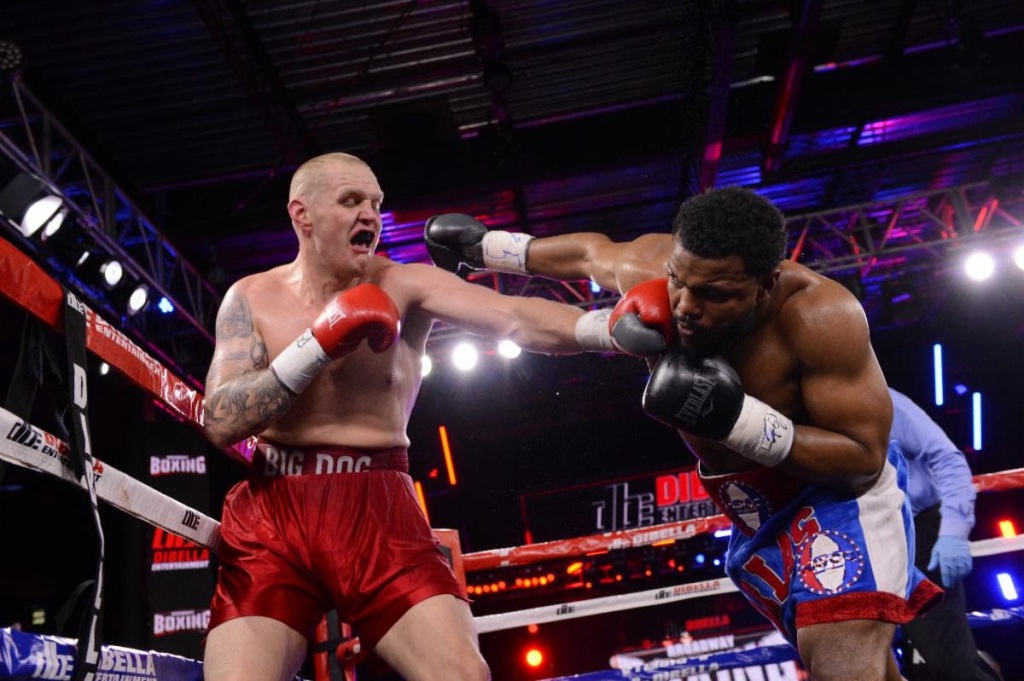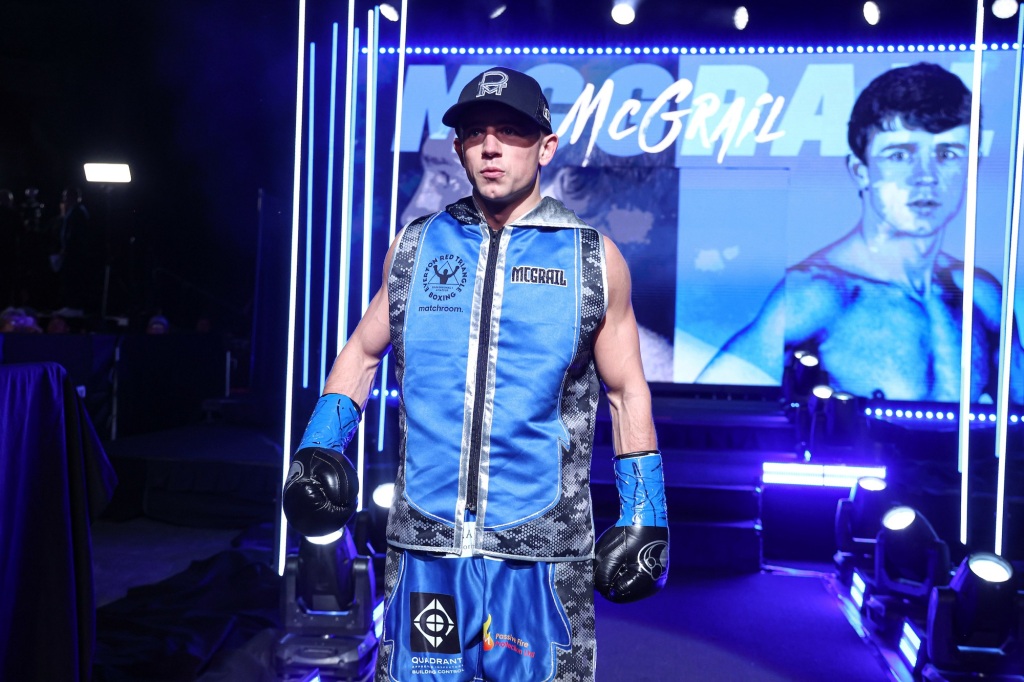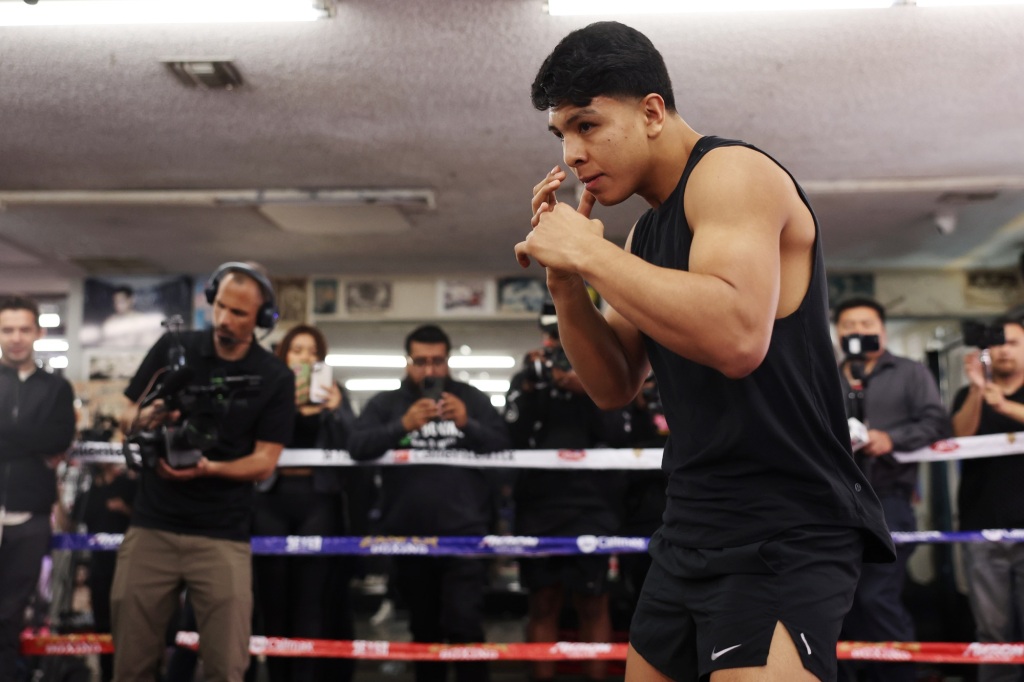From a murky prison cell to the bright lights of Caesars Palace, the journey and transformation of Ron Lyle is one of boxing’s most remarkable stories.
Ronald or “Ron” was one of nineteen siblings born to Nellie and William Lyle. Originating from Dayton, Ohio, the family relocated to Denver when Ron was thirteen – a move that would have significant repercussions for his early life.
During World War II, over four million soldiers had come through Denver, for training or recuperation – and when the war ended, many chose to make it their home. As the population rapidly expanded, housing projects were hastily constructed and one of those sprawling developments was now home to Ron. Rife with violent street crews, it was no surprise that he embraced the gang lifestyle during his teenage years.
He received a poor education and dropped out of school at the age of 19, shortly before being handed a 15-25 year prison sentence in Colorado State Penitentiary, for murdering a rival gang member. He originally insisted that he was attacked with a lead pipe and acted in self-defence, but later claimed he had no involvement and was covering for a friend.
His turbulent lifestyle followed him around and during his incarceration, was stabbed in the abdomen by a fellow inmate, nearly losing his life on the operating table. He claims to have been pronounced dead twice during a seven-hour surgery, which included multiple blood transfusions.
With little education and expecting to spend the majority of his adult years behind bars, he joined the recreational boxing program, encouraged by the prison’s Athletic Director. Boasting an impressive physique, he proved an outstanding boxer and although defeated in his very first outing, would then go unbeaten until his release – just over seven years later.
Upon his release, he was guided into the boxing world by a cable television executive, Bill Daniels, who worked to rehabilitate prisoners. Equipped with a basic skill set and a determination to make something of his life, he began attending the Denver Elks gym, under the tutelage of trainer Bobby Lewis.
He was suitably fast-tracked during the first two years and compiled a record of 19-0, with all but two of those victories coming inside the scheduled distance, including victories over the former light heavyweight champion, Vicente Rondon, and respected contender, Buster Mathis.
Lyle had earned the position of the 5th rated contender in the division and his star was seemingly in the ascendance. However, a career-best performance from experienced heavyweight Jerry Quarry at Madison Square Garden would end Lyle’s winning streak, by way of a unanimous point’s decision.
Forced to rebuild after the setback, he did so emphatically by going unbeaten in his next eleven fights, beating top-ranked contenders Jose Luis Garcia, Oscar Bonavena and former WBA champion, Jimmy Ellis. The only blemish in that period came in the form of a draw against Gregorio Peralta in a ten-rounder.
Although another setback followed, suffering the second defeat of his career to Jimmy Young, he had earned enough kudos to still be in contention for championship glory. This attracted the attention of the then current heavyweight champion, a ‘shy and retiring’ fighter named Muhammad Ali, for what would be the second defence of his crown during his second reign as King.
Lyle came out firing and pressed the action in the early rounds, whilst Ali conserved his energy and picked his shots carefully. The challenger had shown stamina issues in the past and this fight proved no different. He began to tire down the stretch, but that was in large part due to the cute and accurate shots coming from Ali.

Heading into the eleventh round, all three judges had Lyle ahead, mainly due to his work in the first half of the fight. However, the tide slowly turning in the champion’s favour and he unleashed a vicious right hand that wobbled Lyle. To the dismay of the challenger and his corner, a flurry of blows to the head prompted the referee to stop the fight. There was no shame in losing to the greatest heavyweight and most iconic sportsman of all time.
He returned to the ring with a sixth-round knockout over dynamite puncher, Earnie Shavers, in what was the greatest performance and the most impressive victory of his celebrated career. Lyle had previously fallen short against the best in the division, whereas Shavers had a lesser ability but possessed the ultimate equaliser in bone-crushing power.
Fans were anticipating a classic heavyweight barnstormer between two of the divisions most dangerous fighters. Lyle was wary of Shavers’ power in the early rounds, using the jab to keep him at bay and often resting on the ropes to soak up the Alabaman’s heavy blows.
Shavers would be the first to inflict a decisive blow as he sent Lyle sprawling to the canvas in the second round. He managed to survive and was forced to utilise every ounce of resilience to battle through the onslaught.
The third round would follow a similar pattern, but Lyle was content to soak up the punishment because he felt Shavers would begin to tire, targeting the body in an attempt to suck the air from his opponent’s lungs.
By round six, Shavers’ gas tank was running on empty and he was severely depleted due to the body shots from Lyle, combined with the high intensity that had been set during the early rounds. Ron backed his man onto the ropes and unloaded with a series of violent right hands and ultimately battered Shavers into submission.
This victory would earn him another high-profile heavyweight fight, this time against former world champion George Foreman, his first outing since the infamous Rumble in the Jungle defeat to the aforementioned Ali.
To this day, the fight that unfolded between Lyle and Foreman is remembered as one of the most exciting and barbaric slugfests in heavyweight history. The pair came out firing and wasted no time in becoming acquainted with each other’s power.

Despite being rocked heavily in the second round, Lyle stunned spectators inside the arena by flooring Foreman twice in the fourth round, whilst also having to pick himself off the canvas. However, Foreman refused to yield and responded sensationally by knocking Lyle out in the following round.
“Big George” would later recount in his autobiography that Lyle was the toughest man he ever shared a ring with, alongside Gerry Cooney and Cleveland Williams.
He would return to action by stopping Kevin Isaac before losing a decision to Jimmy Young for a second time. A split decision win over world title challenger Joe Bugner would prove to be his final significant victory in 1977, as he struggled from that point onwards to compete at world level.
The decision to bow out of the sport was made in 1980, after being knocked out by the undefeated rising star, Gerry Cooney. He would make a brief comeback 15 years later at the age of 54, chasing a rematch with Foreman but when it didn’t materialise, he permanently retired in 1995, with a professional record of 43-7-1 (31 KO’s).
Post-boxing, the misfortune and travails of his early life resurfaced. Whilst working as a security guard in Las Vegas, he was arrested and charged with murder for a second time. He had shot and killed former inmate and friend Vernon Clark, who was visiting Lyle at his home at the time. Lyle admitted there had been a dispute over money but insisted the shooting was in self-defence, which the jury accepted.
After his acquittal, Lyle ran his own boxing gym, the Denver Red Shield, where he trained former welterweight champion Luis Ortiz for a large part of his amateur career and also guided talented amateur Arash Hashemi to two Golden Gloves Championships.

In 2011, aged 70, he lost his life due to complications from a sudden stomach illness. The boxing world mourned his death and remembered one of the toughest competitors we have seen.
It’s unfortunate that Lyle had found boxing relatively late in life, as the apex of his career was far shorter than most great fighters and champions. He was also unlucky to compete during the golden era of heavyweights in the 70s when the sport was blessed with the most talented generation of big men in the history of the division.
His story isn’t exactly a fairy-tale but is truly inspirational and his achievements serve as an allegory for the triumph of character over adversity.
R.I.P Ronald “Ron” Lyle.





